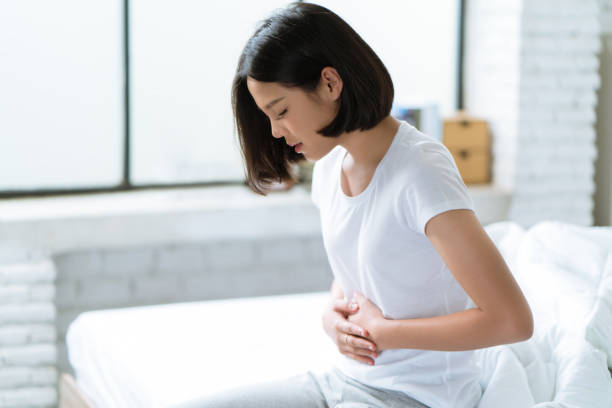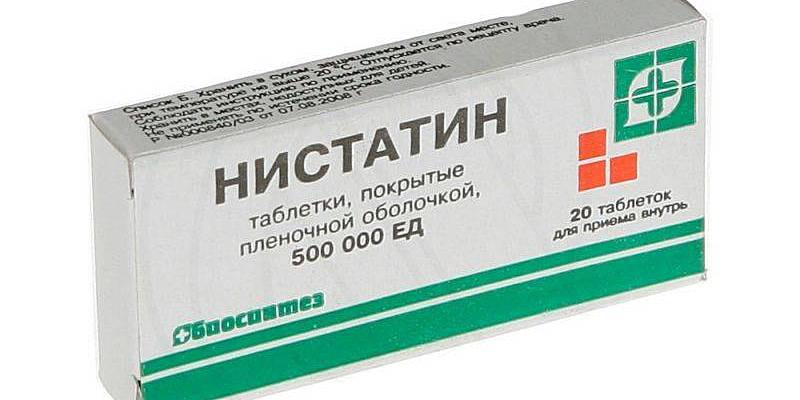Brown discharge after childbirth is a completely normal and natural phenomenon. A young mother cleanses the uterus, resulting in blood clots, mucus, and other secretions that are brown in color. However, in some cases, they may signal any deviations.
Why arises

Brown discharge is called lochia. This is a secret, usually consisting of blood cells, dying epithelium and plasma. In addition, mucus may also be present in their composition, as a result of which these brown secretions become dense. After childbirth, after 2 months, the lochia brighten and at the end of the period become light yellow. As a rule, they appear already on the fifth day and last for one week. In women who underwent a caesarean section of Lochia, you can see a little later.
First steps

Brown discharge after childbirth can be seen already in the first hours. They are plentiful and contain a lot of blood. Sometimes doctors have to apply ice to women in labor on their stomach so that the uterus contracts as quickly as possible and the bleeding stops. Otherwise, the woman runs the risk of losing a lot of blood. Despite the fact that this phenomenon does not pose a health hazard, it is extremely undesirable for a weakened woman in labor and threatens to lower blood pressure and dizziness.
Separately, bleeding resulting from rupture of sutures imposed after childbirth should be noted. In such cases, a woman may experience pain, and doctors will have to rework the gaps.
How to avoid bleeding
In order to prevent open bleeding, the following rules should be observed:
- Sometimes the uterus is not actively contracting. In this case, a compress with ice is placed on the woman’s stomach. Such procedures are carried out no more than four times a day and only for a short time.
- Lactation helps to reduce the uterus and restore its size. In addition, it was noted that women who have already given birth feel quite severe pain in the lower abdomen. Thus, through natural feeding, the uterus is rapidly contracted and cleansed.
- It is extremely important to empty the toilet as often as possible, even if there is no desire.
During the first three days, if you press down the lower abdomen strongly, then the woman will have brown discharge. After childbirth (in the early days), this is especially noticeable. If you lay your back up, the process of purification will become much more intense. Therefore, women in labor are recommended to occasionally roll over and have been in this position for some time. In this position, pressure occurs, which ultimately improves the tone of the uterus. It is also a great way to prevent blood loss.
Deviation from the norm

Sometimes brown discharge after childbirth is accompanied by any kind of disease. For example, a woman may experience thrush after some time. It is characterized by the following symptoms: curdled discharge, redness of the labia, and quite severe itching. This disease occurs if the birth was severe enough and the woman in labor needed antibiotics.
Pain and temperature often indicate an infection. An adverse symptom is also considered a sudden cessation of yellow-brown discharge a month after birth or the appearance of abundant blood. Such phenomena indicate insufficient clarification of the uterus, as a result of which parts of the placenta remain.
The color and nature of Lochia
As a rule, at the very beginning of the Lochia they are red, but already on the third or fourth day they begin to darken. By the end of the second week, they brighten and in the last days become completely yellow. Lochia have no unpleasant or repulsive odor. Sometimes a whole month after birth, brown discharge is uneven. That is, their intensity occasionally increases and within a few days they are plentiful. However, such symptoms should not scare a woman, since they are quite consistent with the norm.
By the smell of brown discharge after childbirth, some diseases can be determined. For example, if there is a specific smell of sour milk, then most likely the microflora was disturbed as a result of the action of antibiotics. A slightly soapy smell, reminiscent of fish, may be associated with the appearance of thrush. The usual smell of blood is considered normal. However, if there is a slight mustiness, then it can also be considered normal if there is insufficient hygiene. Such a smell occurs if a woman does not change gaskets often enough.
When the smell gives off enough rot, it is likely that some kind of inflammation has occurred. If there was an increased body temperature and pain in the lower abdomen, then, most likely, such diseases could develop: postpartum peritonitis, colpitis, or endometritis. The smell of urine does not bode well. Bladder tissue damage may have occurred and urine has entered the uterus. And also sometimes there are fistulas that are in close proximity to the bladder and vagina.
Very often, the doctor requires to put in the underwear not the usual pads, but cloth diapers. This is required so that the doctor can assess the nature of brown discharge and menstruation after childbirth. Thus, the doctor will be able to timely diagnose any disease.
How to avoid infection

In addition to stopping bleeding, it is important to prevent infection. Unfortunately, very often after childbirth women encounter thrush. This disease occurs due to weakening of the immunity of the woman in labor, as well as as a result of the entry of fungal spores into the vaginal cavity. In order to avoid such troubles, personal hygiene should be observed. First of all, you need to take a shower daily using a neutral alkaline soap. In the first month after birth, it is strongly recommended not to take a bath. In addition, women during this period should not do douching and use home-made candles.
Thrush can also result from the use of conventional pads. The fact is that they contain fragrances, fibrous substances and other extra components that irritate the labia and lead to the appearance of thrush. Doctors advise using exclusively gauze liners or regular diapers, which must be ironed with a hot iron before use. In addition, after visiting the toilet, a woman should definitely be washed with warm water.
2 months brown discharge
After childbirth, they can last more than 50 days. Despite the fact that this period is quite impressive, but it is quite natural. If bleeding did not occur during this period, and the whole process gradually disappeared, then there is usually no reason for concern.
In rare cases, the secret appears even for two and a half months. Sometimes yellow or brown discharge after childbirth after 30 days is so insignificant that a woman simply does not notice them. If they have no smell, then there is no cause for concern.
Diagnosis of pathologies

In order to diagnose diseases in time, blood and urine tests should be taken, as well as a smear on the flora. In addition, at the initial stage, it is necessary to undergo an examination with a gynecologist, after which the necessary tests will be directly prescribed. As a rule, a complete diagnosis is not complete without an ultrasound examination of the uterine cavity.
How to treat
Any inflammatory processes require intensive treatment using antibiotics and other anti-inflammatory drugs. In addition, most likely you will need an anesthetic that relieves pain and provides a woman with comfortable treatment conditions. Among the most common drugs prescribed by a gynecologist, Ampicillin, Oxytocin, Paracetamol and No-shpu are distinguished, and Metronidazole is often prescribed.
As a rule, all of the above drugs (except "Oxytocin") take from 3 to 10 days. Unfortunately, women have to stop lactation so as not to harm the baby. The drug "Oxytocin" is used to stimulate uterine contractions, as well as increased lactation.
Folk remedies

There are some recipes for traditional medicine that are used as disinfectants against infection. In addition, some of them help to cleanse the uterus and stimulate the process of its reduction.
For example, medicinal decoctions from several herbs can be used to wash the labia. However, it should be remembered that in the first month after childbirth, in no case should douching be done. In addition to external use, decoctions can be taken inside. The composition of the plants recommended for the preparation of infusion contains anti-inflammatory and general strengthening substances. For example, nettle contains a lot of vitamin A, which contributes to the restoration of tissues of all internal organs. In addition, nettle has long been used as a hemostatic agent.
Chamomile pharmacy also has anti-inflammatory properties and very often acts as a natural antiseptic. Oak bark has astringent properties, and sage contains female hormones. To prepare the broth, you need powdered oak bark and dry herbal raw materials. All components are taken equally and filled with hot water at a rate of 1:10. Infusion can be prepared in a thermos or in a water bath. These methods are much better than ordinary brewing in a cup or boiling in a pan over low heat.
Use the decoction in a metered dose, in a small amount and not more than three times a day. In addition to the above herbs, you can also use the birch buds and St. John's wort inflorescences. In addition, tea tree essential oil has excellent wound healing properties. A few drops are added to warm water and used for washing.
Thrush treatment

If the unpleasant brown discharge after delivery after 2 months is still associated with the appearance of thrush (which happens quite often), then “Nystatin” or “Pimafucin” is prescribed for its treatment. After the approval of the gynecologist, you can use Livarol or Mikrazim suppositories. It is advisable, before proceeding with treatment using traditional medicine, also consult with your doctor.